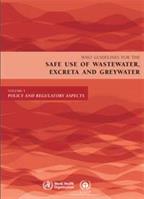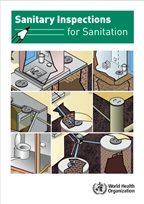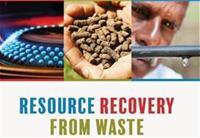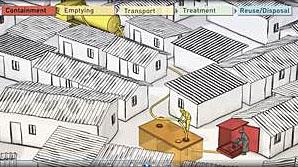Sanitation safety planning
Sanitation safety planning (SSP) is the approach recommended by WHO to support the implementation of the Guidelines on sanitation and health and guidelines on safe use of wastewater, excreta and greywater at the local level. This second edition includes updates to simplify the SSP process, align with the guidelines on sanitation and health for all systems with or without a safe end use step, and incorporate climate risks.
SSP is a risk-based management tool for sanitation systems that:
- helps with systematically identifying and prioritizing health risks along the sanitation chain – that is, toilet, containment–storage/treatment, conveyance, treatment, and end use or disposal;
- guides management and investments in sanitation systems according to risk;
- identifies operational monitoring priorities and regulatory oversight mechanisms that target the highest risks; and
- provides assurance to authorities and the public on the safety of sanitation-related products and services.
Sanitation safety planning - Second edition
Case studies
Relevant publications
Guidelines on sanitation and health
Safe sanitation is essential for health, from preventing infection to improving and maintaining mental and social well-being.Developed in accordance with...

Volume 1 of the Guidelines presents policy issues and regulatory measures distilled from the technical detail found in volumes 2, 3 and 4. Those faced...

Sanitary inspections for sanitation
Sanitary inspections are short-standardized observation checklists that can be adapted and used by stakeholders to assess risk factors at or near sanitation...



